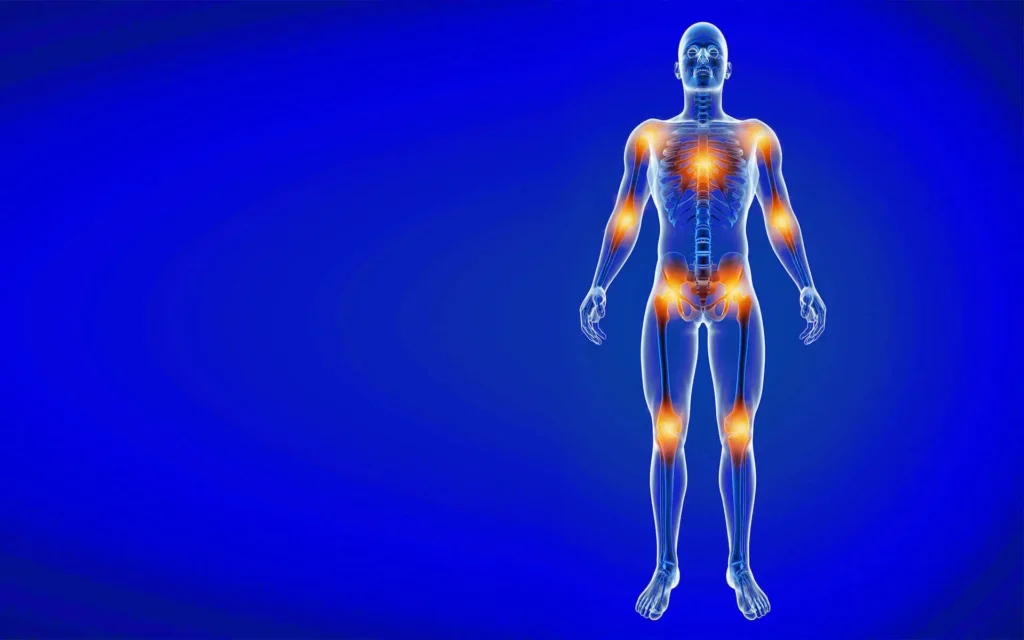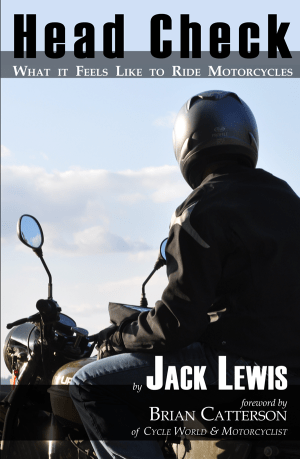I’m not playing that game anymore. The answer is “yes.”
A signal inclusion in any VA medical appointment—from a dislocated toe to a compound leg fracture, from a clot in your foot to a pulmonary embolism—is the enumerated interrogation of discomfort: “What’s your pain number today?”
I dunno. Higher than yours, maybe, but not extraordinary enough to matter much — and it’s not only variable, it’s negotiable by the needs of the moment. It took me a long time to realize that I tick along, most days, at a baseline of pain that might’ve crushed a younger man’s soul — that younger man being me. My idle speed might be around most people’s “5” on the 1-10 scale we’re expected to locate ourselves on.
It might be higher.

“So,” a lean cowboy asked me once, as we leaned on a fence and watched a long-legged woman ride a tall horse around his pasture, “tough guy, huh?”
“Unh…” I replied thoughtfully. The girl on horseback was his daughter. She was gorgeous. I just wanted to look at her forever, but it was his property. “Not really.”
Might have been the patches stitched to my Levis jacket, distilled from former army units. Might have been her dating history. Either way, I’m not so tough but I don’t give up easy, either—I married her, and we had daughters even more amazing than his.
I’m giving up on that pain scale, though. Time now. It never made much sense to me, and lately it’s gone haywire in my head. A month or two back, I hit up the VA hospital’s emergency department with another episode of blood clots. It’s my third or fourth diagnosed round. Because they’ve always been superficial, I don’t worry much about the pain and itching; just swallow my morning baby aspirin and keep on trudging. Every once in a while, the annoyance rises to “okay, that’s noticeable.”
A few days of that, and it either spikes or dwindles. This time it spiked—and moved. When the ankle bruise started climbing up my shin, I politely inquired. Ultrasound located a deep vein thrombosis, which is not the worst clot (that would be pulmonary embolism, heart embolism, or a brain stroke), but it’s not what you want hanging around.
That was a long preamble to my check-in number, laconically reported as “around four.” It’s what I usually assign to an uptick, unless something important is actively falling off, turning black, etc. — you know, worrisome things. I know I’m in pain all the time, but after enough practice at not paying it much mind, I finally defaulted to “4” for owies a little past my normal day-to-day (I always figured daily was maybe a 2; ya gotta leave some room for medical staff to take you seriously if you lose an axe fight, right?).
They prescribed blood thinners, which work. In fewer than 48 hours, my “4” on the pain scale dropped by a minimum of six positions. If the pain scale were relevant to my self-assessment, I should have been walking around in a state of perpetual orgasm, but that is not how it works.
When a woman I was married to (not the cowgirl) told me her goal was to run pain-free into her 70s, I just stared at her. My leg had been bolted up with half a pound of titanium, then split down the side to relieve compartment syndrome, then pulled apart the following year to mine most of the metal. It didn’t prevent army tours, but I haven’t “run pain-free” since I was 16 years old.
Nor walked.
Like you, maybe, I don’t do anything pain-free, including breathe. Not a gripe. Just a fact. Pain attends me as loyally as tinnitus: sometimes blaring, sometimes in the background, sometimes surging and receding. It never just goes away, but I can still hear a lot of things past that damned tin whistle screeching, just like I can (almost always) walk to the mailbox, pet the dog, work out carefully, and do the dishes.

Big life! I revel in every note of a subtly bowed cello, if I sit close enough. While I am grateful for every step, I learned simple number lines in the third grade. You cannot drop more positions than you’re already at, on a 1-10 scale, because third grade number lines don’t have negatives and neither does pain.
It’s just “yes.” I don’t get to say “no,” but I can’t be arsed to calibrate this.
As a kid with high arches, I used to inspect my soles after running around barefoot, convinced that I’d stepped on an upturned thumb tack. Plantar fasciitis is a longstanding feature of my life, becoming somewhat less so as my arches drooped with time and mileage. Three days ago, I yanked an arch doing back squats. Distracted by an irritated bursa in my knee, my permanently crunchy back, blood clots and an irritating COVID booster, it took until yesterday to suss out that I’d “stepped on a tack.”
Pulled arches, like most fresh pains, need to tap my shoulder for a couple of days to be granted an audience. I don’t bother to tape broken toes anymore; they hurt barely more than their raggedy stablemates. When Horton hears that Who, it’s simply screaming “yes.”
I’m older and grumpier than Horton. Who-ville can burn.
Not quite a decade ago, a rural ambulance chauffeured me to the Level 1 Trauma Center in Birmingham, Alabama with nine broken ribs, a punctured and collapsed lung, and flail chest. My left shoulder was broken in the front (collar bone) and back (shoulder blade). My spleen had exploded. It would take a surgical team five hours just to stanch internal bleeding, and a generous transfusion to save my life (thank you, blood donors).
Then the surgeries started. I have Wolverine ribs now, but the plastic mesh belly of a Beanie Baby.
When the ambulance crew first leaned in and asked the level of my pain, I calibrated the best I could. “Seven,” I croaked, then reconsidered. “Maybe an eight.”
A dart toss. How can those numbers mean anything to nurses… and why would a surgeon even care? You could say anything.
The EMTs shook their heads, juiced a needle with ketamine, and shot me up to shut me up. That was how I came to experience vivid hallucinations of military dust-off flights on the hospital roof, and to join my wife (not the cowgirl; not the runner girl) in an a cappella, elevator rendition of “You Are My Sunshine.”
She is, in fact and deed. I know she won’t leave me bleeding by the side of the trail, and she knows I won’t give up just because it hurts. We’re both well past running pain-free but we walk side by side wherever we go, finding each other’s hand.
Can’t put a number on that.
The higher your odometer runs, the less able you are to sort any single affliction from the pile. I’ve never been clear on this. When a pain number is demanded of you, are you supposed to include all your chronic menu items, just the most prominent, or specifically and only the issue you’re ostensibly there to be seen for?
If it’s the latter, how do you tease that out from background noise? I have a crap hip (okay, a “more crappy than its counterpart” hip), but how does a, uh, “gentleman of advancing maturity” accurately separate that annoyance from the torment radiating upward out of a disintegrating knee, and spreading constantly downward from a spine that’s been fractured in four places, from the neck to the sacroiliac?
Nor am I special. How do I compare my puny pain on the scales of people I know who are missing limbs, jobs, families, immune systems? We see others suffering and secretly congratulate ourselves that their stuff can’t affect us because we work hard, worship the right gods, eat healthy, walk briskly, and have good genes.
Then some bad luck finds us, something resoundingly unfair because everyone gets their ration of unmerited travail, and we are taught once again that responsibility and fault are not synonymous. We fold that new, unjustified pain into our cloak, stuffed into a pocket right next to the pain we frankly earned by making dumbass decisions.
It all eats the same.
The answer is simply: “Yes, I have pain.
“Most of it doesn’t matter and some of it does, but that’s probably not what I’m here to see you about, anyway.”
Brain strokes don’t hurt a man with chronic migraine, but pile one on top of a spate of TBIs complicated by PTSD and it’ll make ya suddenly wonder where and how much your cognitive deficits are embarrassing you and everyone around you. What and where are the braining losses; what will I miss, and how could I know?
You probably think straighter, so you tell me.
When do you let go of the shame of your collie dying alone while you lay drunk in a whorehouse 5,300 miles away, and which integer most validly would attach? How do you parse the pain of never getting straight answers you needed from fabulous, fabulist parents? Is there a whole, natural number to describe the guilt of your soldier getting shot?
Shot.
How do you go through life knowing that three of your children have their own pain — that it is trauma-linked and often threatens to overwhelm them and that you are guilty for vast, burgeoning swathes of it — and not feel that like a knife in the chest? How do you numerically calibrate knowing that another one of your kids will never suffer pain; that she’ll never feel grief-stricken, but also never feel joyful or sardonic or jumping-out-of-her-skin-excited for her first date?
Tell me, if you can: what digit do you dial for that? How do you put a number on the human experience, well on its merry way to killing us all?
“Yes.”
And while I’m dead certain that I’m not a masochist — there’s never been a pain I experienced as pleasure, or would repeat for its own sake — I’m grateful for each moment.
Yes. My pain number is simply and always “yes.”
Yes, I have pain. It gets in the way and I trip over it, sometimes. Yes, it’s more of an un-favorite than 7-Up ever was an un-cola. Yes, I’ll keep taking the pain until it kills me.
Because not just in the end, but every day between here and there, it is worth it.
Yes.


 "Jack Lewis takes the overall literary crown with his new book...there’s a lot more to Lewis’s work than what it feels like to ride motorcycles.” — Ultimate Motorcycling
"Jack Lewis takes the overall literary crown with his new book...there’s a lot more to Lewis’s work than what it feels like to ride motorcycles.” — Ultimate Motorcycling
 "Insightful and from the heart ... a driven and much recommended look into the mind and conflict of the next generation of war veterans. " — Midwest Book Review (Reviewer's Choice)
"Insightful and from the heart ... a driven and much recommended look into the mind and conflict of the next generation of war veterans. " — Midwest Book Review (Reviewer's Choice)